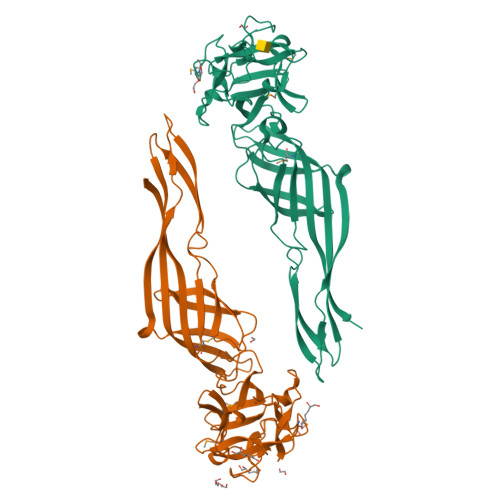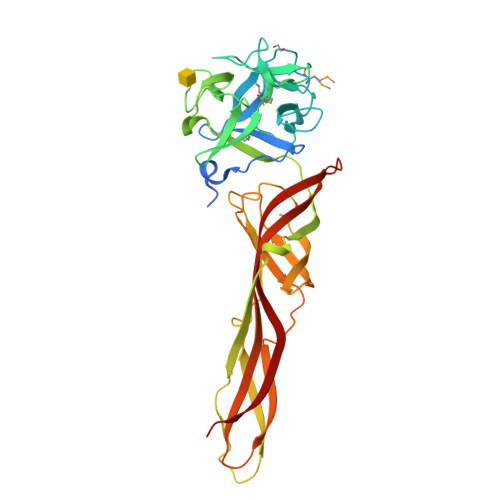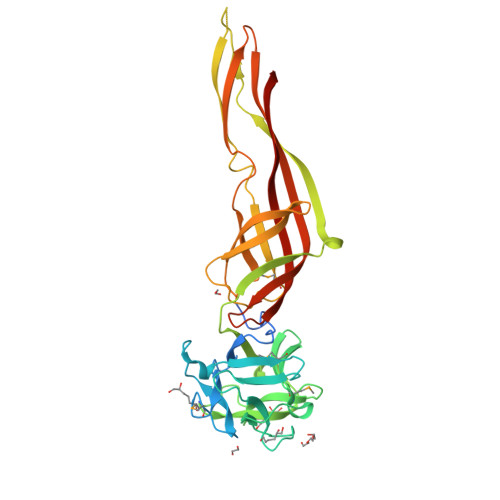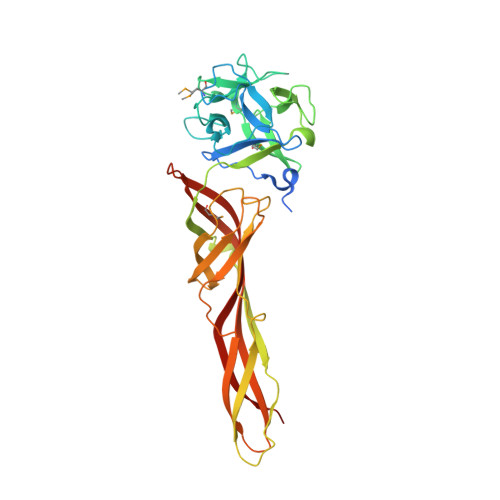The choanoflagellate pore-forming lectin SaroL-1 punches holes in cancer cells by targeting the tumor-related glycosphingolipid Gb3.
Notova, S., Bonnardel, F., Rosato, F., Siukstaite, L., Schwaiger, J., Lim, J.H., Bovin, N., Varrot, A., Ogawa, Y., Romer, W., Lisacek, F., Imberty, A.(2022) Commun Biol 5: 954-954
- PubMed: 36097056
- DOI: https://doi.org/10.1038/s42003-022-03869-w
- Primary Citation of Related Structures:
7QE3, 7QE4, 7R55 - PubMed Abstract:
Choanoflagellates are primitive protozoa used as models for animal evolution. They express a large variety of multi-domain proteins contributing to adhesion and cell communication, thereby providing a rich repertoire of molecules for biotechnology. Adhesion often involves proteins adopting a β-trefoil fold with carbohydrate-binding properties therefore classified as lectins. Sequence database screening with a dedicated method resulted in TrefLec, a database of 44714 β-trefoil candidate lectins across 4497 species. TrefLec was searched for original domain combinations, which led to single out SaroL-1 in the choanoflagellate Salpingoeca rosetta, that contains both β-trefoil and aerolysin-like pore-forming domains. Recombinant SaroL-1 is shown to bind galactose and derivatives, with a stronger affinity for cancer-related α-galactosylated epitopes such as the glycosphingolipid Gb3, when embedded in giant unilamellar vesicles or cell membranes. Crystal structures of complexes with Gb3 trisaccharide and GalNAc provided the basis for building a model of the oligomeric pore. Finally, recognition of the αGal epitope on glycolipids required for hemolysis of rabbit erythrocytes suggests that toxicity on cancer cells is achieved through carbohydrate-dependent pore-formation.
Organizational Affiliation:
Univ. Grenoble Alpes, CNRS, CERMAV, 38000, Grenoble, France.

























